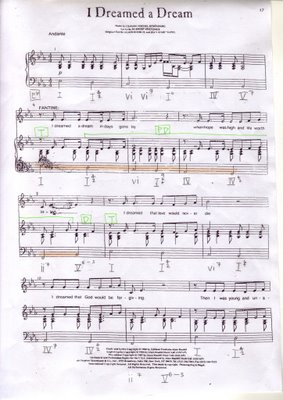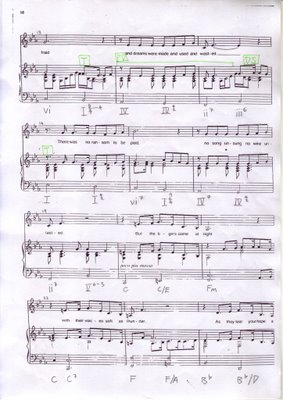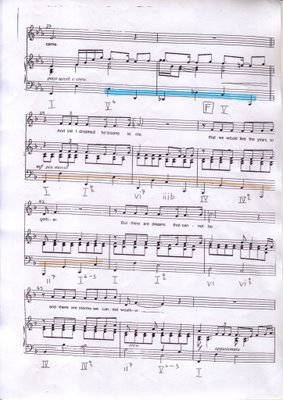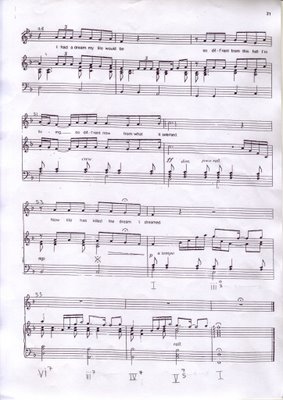skip to main |
skip to sidebar
I Dreamed a Dreamby Michel Schonberg and Alain Boublil from the musical Les Miserables(pronounce as Le-Miz-er-rahb)
Verse 1
I dreamed a dream in time gone by
When hope was high and life worth living
I dreamed that love would never die
I dreamed that God would be forgiving
Verse 2
Then I was young and unafraid
And dreams were made and used and wasted
There was no ransom to be paid
No song unsung, no wine untasted
Bridge
But the tigers come at night
With their voices soft as thunder
As they tear your hope apart
And they turn your dream to shame
Verse 3
He slept a summer by my side
He filled my days with endless wonder
He took my childhood in his stride
But he was gone when autumn came
Verse 4
And still I dream he'll come to me
That we will live the years together
But there are dreams that cannot be
And there are storms we cannot weather
Coda
I had a dream my life would be
So different from this hell I'm living
So different now from what it seemed
Now life has killed the dream I dreamed.
Analysis:
Form
The form of this piece is generally A A B A 'A C. It is strophic with the melody repeating for the 4 verses, but with different words each time. It also has a bridge which links V2 and V3. The piece then ends with a Coda.
Tonality
The piece starts in EbMajor. However in bars 38-39(V4), the music heightens as the key modulates 2 semitones up to FMajor. This modulation is achieved by a gradual descending chromatic progression as seen in the bass line; D to Db to C, where C is the dominant of the new key FMajor. Along with the modulation, performance direction is given in bar 37 and 39 to increase the speed and gradually become louder. This helps to bring the music to a higher level.
Metre
In class we established that the metre of the music give its feel and melodic shape, and it is neither the pulse nor rhythm. This piece has steady 4/4 metre almost throughout, and only at bar 29 the metre changes to 2/4 time. The Purpose of this is to create fluidity and blur the phrasal structure to push the music forward. The last note B from the 5 ascending notes is therefore cut short to a dotted crotchet. Since time is cut short in this bar, it moves more quickly and feels more hurried into bar 30 (verse3) after the bridge. This causes emotions to build up as the song becomes more exciting.
Rhythm
To create rhythmic interest in the verses, dotted quavers are also used instead of only even quaver beats. On top of that, triplets are also used in V4. This is one of the reasons why listeners will not get bored listening to the same melody 4 times in this song. Secondly, it is interesting to note that every single phrase in this piece starts on an off-beat.
Harmony
There is a ground bass, which in this piece is a descending melodic line in the bass, and it persists almost throughout the whole piece, except in the bridge. It is in the lowest register and it acts as a support for the rest of the music in the higher register as well as the voice part. Secondly, there is a tonic pedal(Eb) in the bass which spans bars 27 to 28. This makes it seem as if the outermost parts are moving in oblique motion.
Others
Marked out in green on the score are the function regions. The phrases are mostly repetitive, so I only marked out the 2 main phrases.
T- Tonic
PD- Predominant
D- Dominant
DS- Dominant Substitution
It is interesting to note there is a Dominant Substitution(DS) in bar 15. Initially I analyzed that chord as a V7 with an added 6. But thanks to Dr Chong's enlightenment, I can now share with you all that it is actually a chord iii in 1st inversion acting as a DS.






